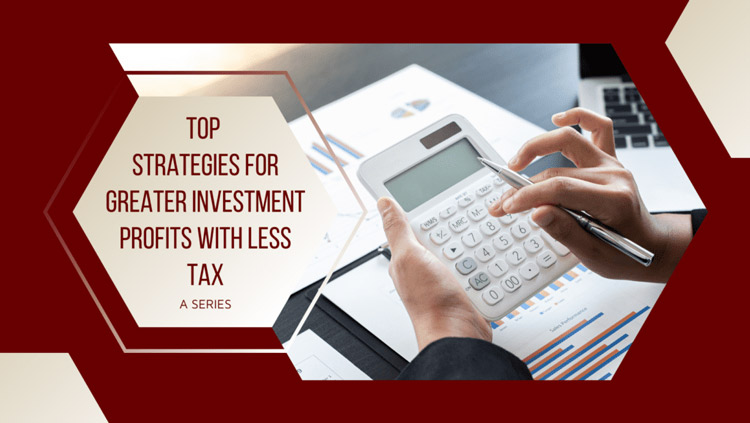Strategy #3: Set up a Risk-Adjusted Portfolio
Our third strategy is to set up a risk-adjusted portfolio. This type of portfolio should be different depending on the age of the investor.
The big difference is time. If you’re younger, you probably don’t have as much money saved up. In addition, you’re trying to grow money, over time, for the future. If you are older, you may have a large amount of money invested, and you’ll want to protect that money for the future.
When it comes to investing, your age matters quite a bit. If you’re in your 20s or 30s, you should be using a much different strategy than someone in their 50s or older.
Younger vs. Older Investors
You want to look at the types of companies you are investing in because some may be riskier than others. When you’re younger, you can have some smaller companies or maybe a few startups in your portfolio. You can even look into different industries.
But, let’s say an up-and-coming business you invested in goes bankrupt. No worries! Because you’re still young, you have plenty of time to recover the money you lost, long before retirement.
As you get older, you probably want to invest in companies that are more established and a bit safer. For example, companies that have been around for a long time, like General Electric or General Motors, are probably the type of companies you want to invest in. These types of companies will grow slow and steady, but they’re probably not going to quadruple overnight.
Although no two investors are exactly the same, there are some guidelines for investors of different ages to follow.
The 3 different age groups of investors include:
- Younger investors. These investors are usually in the age bracket of 25 to 35 years of age. This is considered the accumulation phase where the investor is trying to save as much money as possible for the future.
- As a younger investor you should have more stocks, and maybe even more growth companies, because you’re trying to build your money.
- Even if there’s a market downturn, it’s not as catastrophic to you when you’re younger because you have time before retirement to make it up.
- When you are in this age bracket, you should be investing around 20 percent of your income, as well as building an emergency fund and possibly a college fund for your children.
- Middle aged investors. These investors are usually in the age bracket of 35 to 55 years of age. This is considered the transition phase where you’re saving for retirement and college costs, but you also need to start thinking about preserving your assets.
- As you get older and move into middle age territory, you might need to become a bit more conservative.
- You should still keep your investments geared toward growth because you’re likely to have a while to go before retirement.
- Ensure you have a cash cushion available that could cover at least one year of living expenses in case of some unforeseeable event, such as loss of employment or illness.
- Older investors. These investors are usually in the age bracket of 55 to 75 years of age. During this phase, you’ll want to create a plan for withdrawing your money. This is also the time period where you’ll begin relying on your investments to meet living expenses.
- As you get closer to retirement, you might need to start moving some money around. Maybe you should consider moving away from stocks and into more stable investments, such as bonds or money markets, which retain their value and have fewer ups and downs.
- With every year that goes by, you have less time to make up for any mistakes. You probably have more money in savings, so if there’s a market downturn, it will hurt you a lot more than younger investors.
- Remember that your biggest obstacle during this time period is inflation.
Luckily, there are many financial planning resources and online tools you can use to assess your status. There are also financial advisors who can be very helpful in investment decisions.
Many brokerage accounts do the legwork for you. They will set up sample portfolios that are diversified depending up on an investment profile that fits with your age.
For example, if you’re working with Fidelity or Vanguard, they’ll have a mutual fund that says, “Ideal for people in their 50s,” where they’ve put together a specific portfolio for you if you’re in that age bracket. They apply a formula where you should have so much in stocks, so much in bonds, and so much in cash.
However, there’s not a one-size-fits-all portfolio. If you’re in your 40s trying to retire at 50, you need to be much more conservative, versus if you’re someone that’s 50 trying to retire in 30 years, you can maybe take on more risk.
It really just depends on how much time you plan on before you need to begin using your retirement income.
Risk
The topic of risk really hit home just a few years ago because many investors that were close to retirement got carried away in the stock boom of 2006, 2007, 2008. So they ended up with way more money in stocks than they should have because they didn’t take the necessary precautions.
So when the market plummeted at the end of 2008, it really put the retirement plan of those investors off track. It’s still a matter of “don’t get greedy or emotional.”
Always proceed with caution. If the market is booming, avoid investing too much into stocks, even though it feels good at the time. At the same time, when the market is crashing and you’re young, still buy up stocks because they’ll most likely pay off eventually.
“Preparation for old age should begin not later than one’s teens. A life which is empty of purpose until 65 will not suddenly become filled in retirement.”
~Dwight L. Moody
Thanks for reading! Stay tuned for more.

